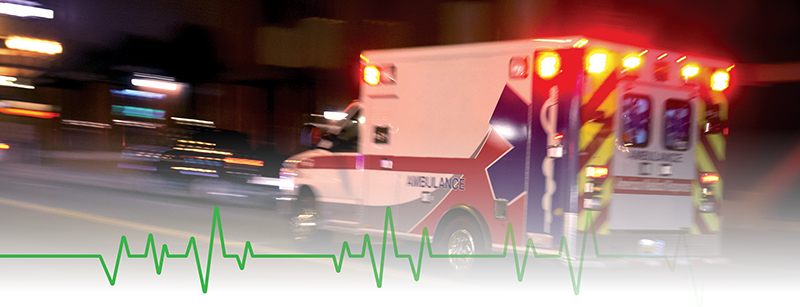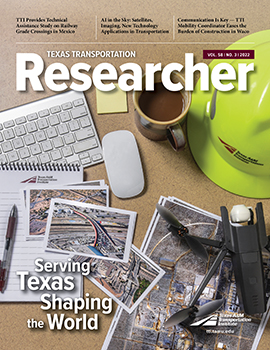During an emergency, seconds matter. However, navigating through busy urban arterials may sometimes be a tricky task for emergency response vehicles, particularly through busy intersections. In 2021, of the 633,499 roadway crashes in Texas, nearly 37 percent occurred at intersections, emphasizing the importance of improving safety in these scenarios.
An ongoing research project conducted by the Texas A&M Transportation Institute (TTI) and sponsored by the Texas Department of Transportation (TxDOT) has yielded promising results in an alternative means of notifying drivers of an oncoming emergency vehicle. TTI formed a multi-program research team collaborating on this project, with the TxDOT Houston District taking the lead.
“In the existing preemption systems, an emergency vehicle turns on its emergency sirens and strobe lights to alert nearby vehicles of its arrival,” says TTI Assistant Research Engineer Tracy Zhou. “However, there is no alternative way of warning nearby vehicles when the drivers cannot be alerted properly by the sirens and lights. The goal of this project is to provide TxDOT with prototype systems for using connected vehicle [CV] technologies to improve traffic signal preemption and provide first responders and civilian drivers with signal, roadway and traffic information.”
The CV technologies being studied include dedicated short-range communication (DSRC), cellular vehicle-to-everything (C-V2X) communication and Bluetooth® low-energy (BLE) communication.
The research team has been testing the hardware and software settings of the CV prototypes to broadcast various messages in a controlled environment and at selected field sites (e.g., single intersections, diamond intersections and ramp meters) in the TxDOT Houston District. Researchers will then identify the potential benefits of the connected emergency vehicle preemption system by simulation analysis and/or field data collection in before-and-after studies on selected corridors in Houston.
The key products of the project include DSRC/C-V2X and BLE prototype systems that operate on TxDOT infrastructure and guidelines for implementing the systems.
In the not-so-distant future, our vehicles may be able to provide us with even more critical roadway information such as when an emergency vehicle is approaching a congested intersection. Such traveler information is key to making split-second decisions that could save a life.
“The Houston metropolitan area has witnessed a continuing increase in its population over the past decade. It is vital to ensure the safety and timeliness of first responders’ travel for emergency services when major events (like Hurricane Harvey) happen,” says Zhou. “By leveraging the CV emergency preemption technologies, the results of this project can help enhance the emergency response service system and improve the safety and mobility of our roadway system.”

